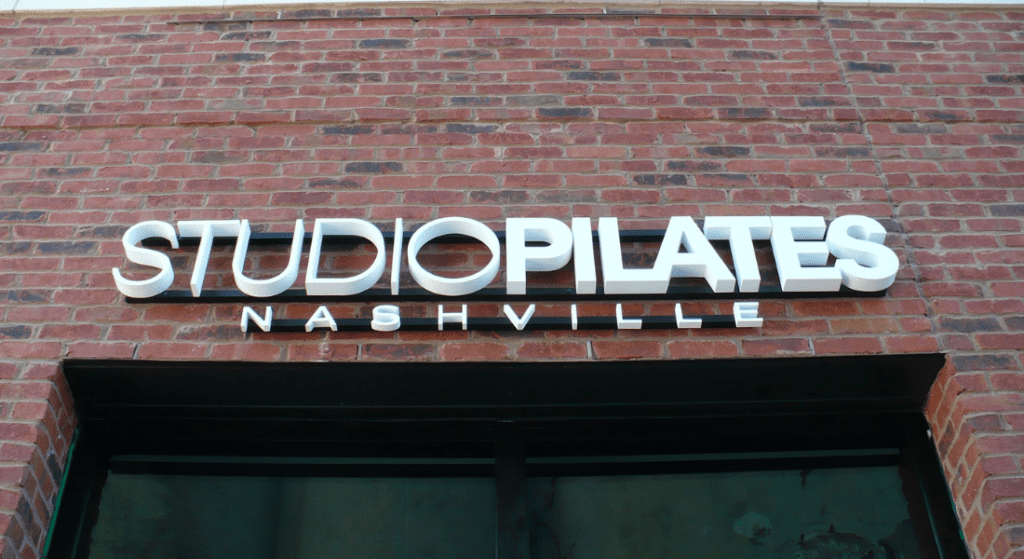Whether indoor or outdoor, dimensional letters are one of the most versatile products in the world of signs. They come in a wide variety of styles, materials, and price ranges, so they can dress up just about any building, storefront, or lobby.
Table of Contents
ToggleJust What Are Dimensional Letters?
Dimensional letters are solid pieces with a thickness – the third dimension that painted or cut vinyl letters do not have. They are there to give depth and body to your sign. They set the message apart from its background, literally making it stand out, and work with the light to make the sign more visually interesting.
In conventional sign industry terminology, dimensional letters are not internally illuminated; illuminated letters (while they have dimension) are known as “channel letters”. Whereas channel letters are hollow (a channel formed from metal) to hold the lighting elements, dimensional letters are most often solid.

What Kind of Materials Are Used for Dimensional Letters?
There are probably a dozen different materials used for dimensional letters, all with their own advantages and disadvantages. We have narrowed it down to four that we strongly prefer for most applications:
- Indoor Foam – A lightweight foam with a smooth styrene face. It’s relatively economical, and can be painted any color or can have a laminate applied to the face to change the look. On the downside, the edges are not very finished and it can only be applied flush to the wall. (More on laminates and mounting methods later.)
- Acrylic – Solid, relatively dense plastic with a polished finish. Maybe the most versatile material, acrylic can be used indoor or outdoor. It’s available clear and in several solid colors, can be painted any color, and can have a laminate applied. It can be mounted flush to the wall or on standoffs. It’s in the middle range of the price scale.
- Outdoor Foam – A higher density closed-cell foam. While it’s toward the higher end of the price scale, it will stand up to the elements for years without cracking or warping. It’s most often painted but can also have a laminate or a full-color vinyl graphic applied to the face. It’s also the thickest material available, an important factor for larger outdoor signs.
- Flat Cut Metal – Usually aluminum unless the application calls for something else (brass, steel, etc.). Metal letters are limited in thickness by their weight – generally 1/4″ thick is the maximum. They can be painted, but flat cut metal is usually chosen for the metal look – brushed, polished, rustic, etc. It’s also toward the upper end of the scale.
Laminates are used to dress up a less expensive material or to combine looks. For example, you may want to add a polished acrylic face to a foam letter or a brushed metal face to an acrylic letter. The laminate is only applied to the face, however… if the appearance of the sides matters, we may have to look at different materials.
Okay, How Big Should the Letters Be?
First, we’ll determine the best overall size, considering the space available, viewing distance, and good design practice. Then comes the part that’s unique to dimensional letters: thickness. If they’re too thin (like 3-foot-high letters 1/8” thick), they don’t really look any different from the paint. If they’re too thick, they might be unreadable from any direction except straight on (see the graphic at right). We take into account the height, font characteristics, lighting, background, and material when choosing a thickness.
How Do You Attach Letters to the Wall?
There are two methods for mounting: stud mounting and adhesive, and as with everything else, there are advantages and disadvantages to each. Adhesive (including double-sided tape) is less labor-intensive and requires less wall repair if/when the letters are removed, but can only be used for flush mounting lighter-weight materials (not flat cut metal). Stud mounting requires a lot of holes in the wall (three or four for each piece), but it allows for spacing off the wall, and they’re actually easier to remove. The cost is also a little higher, and some materials will not accept a stud.
Sometimes we run across a situation where neither will work, such as a wall that’s not flat or where drilling dozens of holes is not acceptable. We can always mount the letters to a panel or a frame and mount that to the wall.
That Looks Awesome! How Do We Get Started?
To get a great-looking dimensional letter sign for your business, all you have to do is call MetroCenter Signworks at 615-649-5003, or visit our website at MetroCenterSignworks.com. (You should also check out our Gallery of past projects for more inspiration! You’ll see a lot more examples of indoor and outdoor dimensional letter projects.) We’ll walk you through the entire process, starting with helping you choose the best materials to fit your goals and sizing your sign. From there we’ll take care of the rest of the process to get a fabulous dimensional letter sign on your wall.
